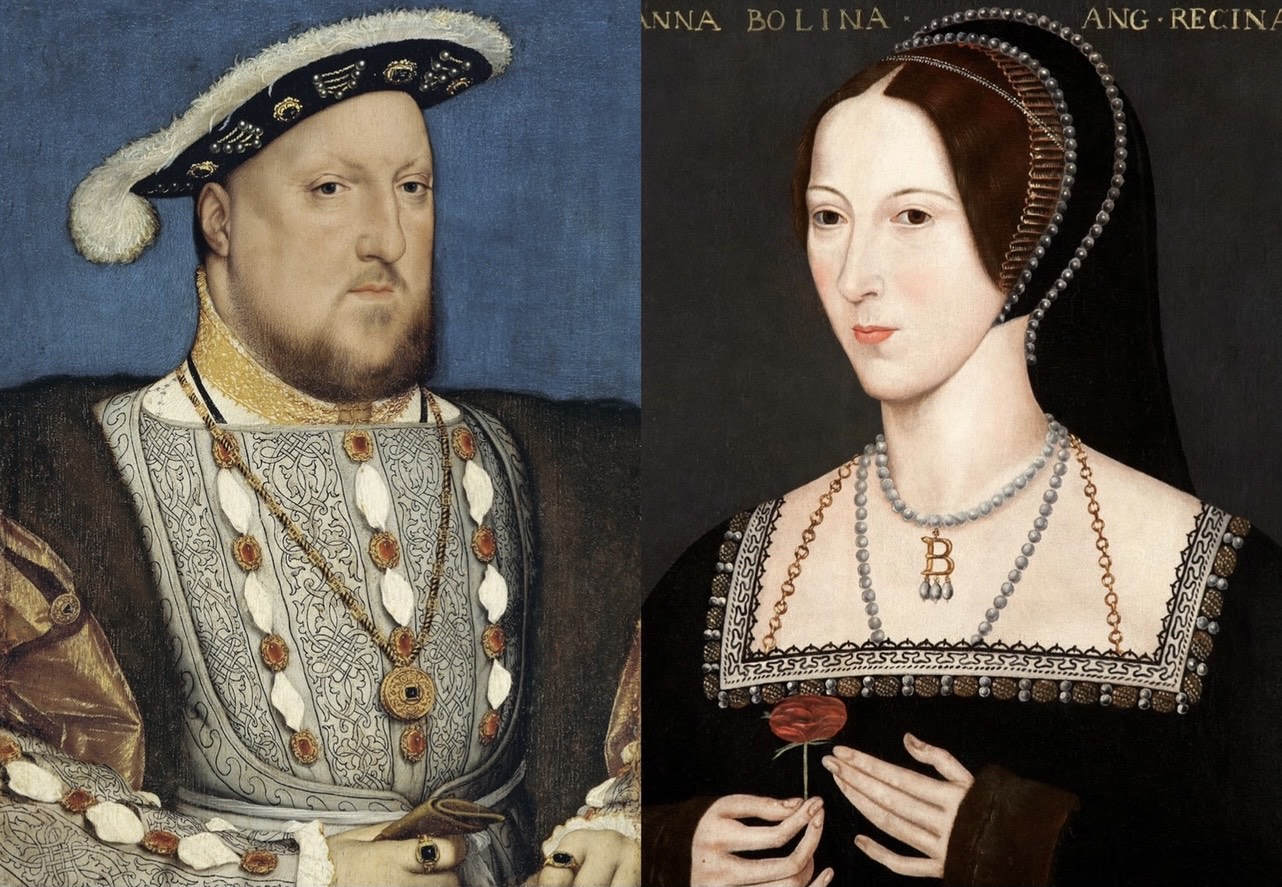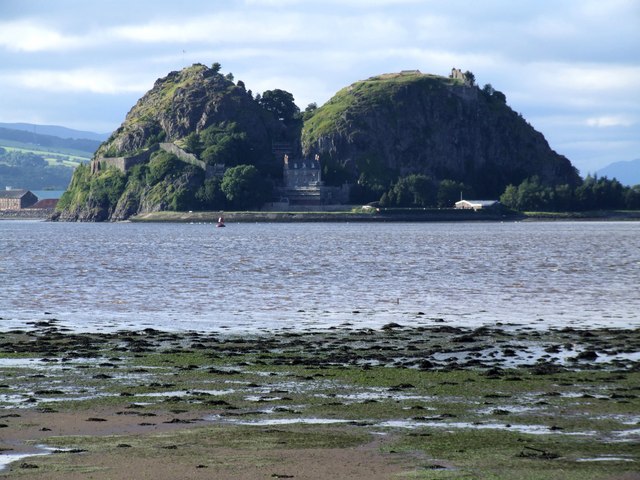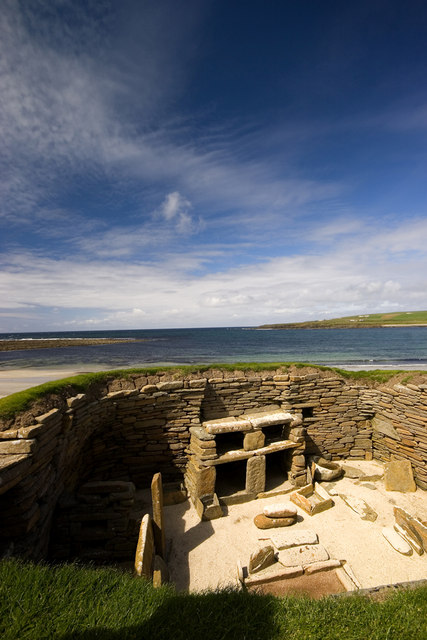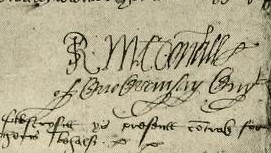|
Dunluce Castle
Dunluce Castle (; ) is a now-ruined medieval castle in Northern Ireland, the seat of Clan MacDonnell. It is located on the edge of a basalt outcropping in County Antrim (between Portballintrae and Portrush), and is accessible via a bridge connecting it to the mainland. The castle is surrounded by extremely steep drops on either side, which may have been an important factor to the early Christians and Vikings who were drawn to this place where an early Irish fort once stood. Protected status Dunluce Castle is in the care of the Northern Ireland Environment Agency. It is a monument in state care sited in the townland of Dunluce, in Coleraine Borough Council area, at grid ref: C9048 4137. The earthworks, adjacent to Dunluce Castle, are a scheduled historic monument, at grid ref: area of C905 412. History In the 13th century, Richard Óg de Burgh, 2nd Earl of Ulster, built the first castle at Dunluce. It is first documented in the hands of the McQuillan family in 1513. The e ... [...More Info...] [...Related Items...] OR: [Wikipedia] [Google] [Baidu] |
County Antrim
County Antrim (named after the town of Antrim, ) is one of six counties of Northern Ireland and one of the thirty-two counties of Ireland. Adjoined to the north-east shore of Lough Neagh, the county covers an area of and has a population of about 618,000. County Antrim has a population density of 203 people per square kilometre or 526 people per square mile. It is also one of the thirty-two traditional counties of Ireland, as well as part of the historic province of Ulster. The Glens of Antrim offer isolated rugged landscapes, the Giant's Causeway is a unique landscape and a UNESCO World Heritage Site, Bushmills produces whiskey, and Portrush is a popular seaside resort and night-life area. The majority of Belfast, the capital city of Northern Ireland, is in County Antrim, with the remainder being in County Down. According to the 2001 census, it is currently one of only two counties of the Island of Ireland in which a majority of the population are from a Protesta ... [...More Info...] [...Related Items...] OR: [Wikipedia] [Google] [Baidu] |
McQuillan
McQuillan and MacQuillan are surnames of Irish origin. There are several unrelated origins of the surnames McQuillan and MacQuillan. The Ulster variant of the surname was claimed to be an anglicisation of the Gaelic ''Mac Uighilín'' (''son of Hugelin''), the name allegedly adopted by the family of Hugelin de Mandeville. The de Mandevilles were a Cambro-Norman family and had conquered an area of north Antrim.The Book of Ulster Surnames, The Black Staff Press, In reality the de Mandevilles sold their estates in northern Antrim to the McQuillans of County Down. Both families had previously held the office of "constable of the bonnaght" for the Earldom of Ulster – a system adopted from the Irish where mercenaries were hired to act as a body of standing troops. The McQuillans renamed the lands they acquired "the Route", derived from their "rout", a common term then for a private army.Bardon, Jonathan, A History of Ulster, page 45. The Black Staff Press, 2005. These McQuillan ... [...More Info...] [...Related Items...] OR: [Wikipedia] [Google] [Baidu] |
James VI And I
James VI and I (James Charles Stuart; 19 June 1566 – 27 March 1625) was King of Scotland as James VI from 24 July 1567 and King of England and Ireland as James I from the union of the Scottish and English crowns on 24 March 1603 until his death in 1625. The kingdoms of Scotland and England were individual sovereign states, with their own parliaments, judiciaries, and laws, though both were ruled by James in personal union. James was the son of Mary, Queen of Scots, and a great-great-grandson of Henry VII, King of England and Lord of Ireland, and thus a potential successor to all three thrones. He succeeded to the Scottish throne at the age of thirteen months, after his mother was compelled to abdicate in his favour. Four different regents governed during his minority, which ended officially in 1578, though he did not gain full control of his government until 1583. In 1603, he succeeded Elizabeth I, the last Tudor monarch of England and Ireland, who died childless. H ... [...More Info...] [...Related Items...] OR: [Wikipedia] [Google] [Baidu] |
Randal MacDonnell, 1st Earl Of Antrim
Randall MacSorley MacDonnell, 1st Earl of Antrim, PC (Ire) (died 1636), rebelled together with Tyrone and Tyrconnell in the Nine Years' War but having succeeded his brother, Sir James mac Sorley MacDonnell, as Lord of the Route and the Glynns in 1601, he submitted to Mountjoy, the Lord Deputy of Ireland, in 1602. In 1618, he became Viscount Dunluce and in 1620 was advanced to Earl of Antrim. However, he remained Catholic. Birth and origins Randal was the fourth son of Sorley Boy MacDonnell and his first wife Mary O'Neill. His father was Lord of the Route. His father's family was a branch of the Scottish Clan Donald. His mother was a daughter of Conn O'Neill, 1st Earl of Tyrone. She died in 1582. Early life In his youth, Randal was fostered in the Gaelic manner and lived with a Presbyterian Stewart family on the Scottish island of Arran. He was therefore called "Arranach" in Irish/Scottish Gaelic (meaning "of Arran"). His father died in Fe ... [...More Info...] [...Related Items...] OR: [Wikipedia] [Google] [Baidu] |
Queen Elizabeth I
Elizabeth I (7 September 153324 March 1603) was Queen of England and Ireland from 17 November 1558 until her death in 1603. Elizabeth was the last of the five House of Tudor monarchs and is sometimes referred to as the "Virgin Queen". Elizabeth was the daughter of Henry VIII and Anne Boleyn, his second wife, who was executed when Elizabeth was two years old. Anne's marriage to Henry was annulled, and Elizabeth was for a time declared Royal bastard, illegitimate. Her half-brother Edward VI ruled until his death in 1553, bequeathing the crown to Lady Jane Grey and ignoring the claims of his two half-sisters, the Catholic Church, Catholic Mary I of England, Mary and the younger Elizabeth, in spite of Third Succession Act, statute law to the contrary. Edward's will was set aside and Mary became queen, deposing Lady Jane Grey. During Mary's reign, Elizabeth was imprisoned for nearly a year on suspicion of supporting Protestant rebels. Upon her half-sister's death in 1558, Eliz ... [...More Info...] [...Related Items...] OR: [Wikipedia] [Google] [Baidu] |
Sorley Boy MacDonnell
Sorley Boy MacDonnell ( Scottish Gaelic: ''Somhairle Buidhe Mac Domhnaill''), also spelt as MacDonald (c. 1505 – 1590), Scoto-Irish chief, was the son of Alexander Carragh MacDonnell, 5th of Dunnyveg, of Dunyvaig Castle, lord of Islay and Cantire, and Catherine, daughter of the Lord of Ardnamurchan, both in Scotland. MacDonnell is best known for establishing the MacDonnell clan in Antrim, Ireland, and resisting the campaign of Shane O'Neill and the English crown to expel the clan from Ireland. Sorley Boy's connection to other Irish Roman Catholic lords was complicated, but also culturally and familiarly strong: for example, he married Mary O'Neill, the daughter of Conn O'Neill. He is also known in English as Somerled and Somerled of the yellow hair. Clan MacDonnell The MacDonnells of Antrim were a sept of the powerful Clan Donald of the royal Clann Somhairle, ''(see Lords of the Isles)'', that the English crown had attempted to cultivate since the early 14th cen ... [...More Info...] [...Related Items...] OR: [Wikipedia] [Google] [Baidu] |
Robert II Of Scotland
Robert II (2 March 1316 – 19 April 1390) was King of Scots from 1371 to his death in 1390. The son of Walter Stewart, 6th High Steward of Scotland, and Marjorie, daughter of King Robert the Bruce, he was the first monarch of the House of Stewart. Upon the death of his uncle David II, Robert succeeded to the throne. Edward Bruce, younger brother of Robert the Bruce, was named heir presumptive but died childless on 3 December 1318. Marjorie Bruce had died probably in 1317 in a riding accident and Parliament decreed her infant son, Robert Stewart, as heir presumptive, but this lapsed on 5 March 1324 on the birth of a son, David, to King Robert and his second wife, Elizabeth de Burgh. Robert Stewart became High Steward of Scotland on his father's death on 9 April 1327, and in the same year Parliament confirmed the young Steward as heir should David die childless. In 1329 King Robert I died and his five-year-old son succeeded to the throne as David II under the guardianship of ... [...More Info...] [...Related Items...] OR: [Wikipedia] [Google] [Baidu] |
Clan Donald
Clan Donald, also known as Clan MacDonald ( gd, Clann Dòmhnaill; Mac Dòmhnaill ), is a Highland Scottish clan and one of the largest Scottish clans. The Lord Lyon King of Arms, the Scottish official with responsibility for regulating heraldry in that country, issuing new grants of coats of arms, and serving as the judge of the Court of the Lord Lyon, recognises under Scottish law the ''High Chief of Clan Donald''. Historically the chiefs of the Clan Donald held the title of Lord of the Isles until 1493 and two of those chiefs also held the title of Earl of Ross until 1476. There are also numerous branches to the Clan Donald and several of these have chiefs recognised by the Lord Lyon King of Arms; these are: Clan Macdonald of Sleat, Clan Macdonald of Clanranald, Clan MacDonell of Glengarry, Clan MacDonald of Keppoch, and Clan MacAlister. There are also notable historic branches of Clan Donald without chiefs so-recognised, these are: the Clan MacDonald of Dunnyveg, Clan MacDonald ... [...More Info...] [...Related Items...] OR: [Wikipedia] [Google] [Baidu] |
John Of Islay, Lord Of The Isles
:''This article refers to John I, Lord of the Isles; for John II, see John of Islay, Earl of Ross'' John of Islay (or John MacDonald) ( gd, Eòin Mac Dòmhnuill or gd, Iain mac Aonghais Mac Dhòmhnuill) (died 1386) was the Lord of the Isles (1336–1386) and chief of Clan Donald. In 1336, he styled himself ''Dominus Insularum'', "Lord of the Isles"; although this was not the first ever recorded instance of the title in use. Some modern historians nevertheless count John as the first of the later medieval Lords of the Isles, although this rather broad Latin style corresponds roughly with the older Gaelic title '' Rí Innse Gall'' ("King of the Isles"), in use since the Viking Age. For instance, the even more similar Latin title ''dominus de Inchegal'' ("Lord of the Hebrides"), applied to Raghnall Mac Somhairle in the mid-12th century. In fact John is actually styled ''Rí Innsi Gall'' or King of the Isles shortly after his death in a contemporary entry in the Irish Annals of Ul ... [...More Info...] [...Related Items...] OR: [Wikipedia] [Google] [Baidu] |
Scotland
Scotland (, ) is a country that is part of the United Kingdom. Covering the northern third of the island of Great Britain, mainland Scotland has a border with England to the southeast and is otherwise surrounded by the Atlantic Ocean to the north and west, the North Sea to the northeast and east, and the Irish Sea to the south. It also contains more than 790 islands, principally in the archipelagos of the Hebrides and the Northern Isles. Most of the population, including the capital Edinburgh, is concentrated in the Central Belt—the plain between the Scottish Highlands and the Southern Uplands—in the Scottish Lowlands. Scotland is divided into 32 administrative subdivisions or local authorities, known as council areas. Glasgow City is the largest council area in terms of population, with Highland being the largest in terms of area. Limited self-governing power, covering matters such as education, social services and roads and transportation, is devolved from the ... [...More Info...] [...Related Items...] OR: [Wikipedia] [Google] [Baidu] |
Clan MacDonald Of Dunnyveg
Clan MacDonald of Dunnyveg, also known as Clan Donald South, ''Clan Iain Mor, Clan MacDonald of Islay and Kintyre, MacDonalds of the Glens (Antrim)'' and sometimes referred to as ''MacDonnells'', is a Scottish clan and a branch of Clan Donald. The founder of the MacDonalds of Dunnyveg is Eòin Mòr Tànaiste Mac Dhòmhnaill, a son of Iain Mic Dhòmhnaill (John of Islay, Lord of the Isles) and Margaret Stewart of Scotland, daughter of King Robert II. Members of the clan actually pronounced and spelled their name ''M'Connall'' due to the Gaelic pronunciation of the name ''Mac Domhnuill'' thus giving rise to the surname McConnell and its variants. While historically recognised as a clan by the Court of the Lord Lyon, it is now an armigerous clan as it no longer has a chief. The last chief was Sir James MacDonald, 9th of the Clan MacDonald of Dunnyveg or Clan Donald South, who died in London in 1626. History Origins of the clan The founder of Clan Donald of Dunnyveg and the ... [...More Info...] [...Related Items...] OR: [Wikipedia] [Google] [Baidu] |
Clan MacDonnell Of Antrim
The MacDonnells of Antrim (Gaelic: ''Mac Domhnaill''), also known as the MacDonnells of the Glens, are a branch in Ireland of the Scottish-based Clan Donald. Initially part of Clan MacDonald of Dunnyveg (Clan Donald South), the MacDonnells of Antrim became their own branch in 1558 when Somhairle Buidhe MacDonnell obtained the lordship of the territory in Ireland from James MacDonald, 6th chief of the Clan MacDonald of Dunnyveg. The MacDonnells of Antrim were a sept of the Clan Donald of the royal Clann Somhairle, that the English crown had attempted to cultivate since the early 14th century in its efforts to influence the course of politics in Scotland. The MacDonnells established a growing presence in Ireland throughout the 15th and 16th centuries,and played a crucial role in the politics of 17th century Ireland. The MacDonnell's achieved much success in Ireland largely to cultural and familial connections to the Gaelic nobility of Ireland. Today the surname is predominantly spe ... [...More Info...] [...Related Items...] OR: [Wikipedia] [Google] [Baidu] |







